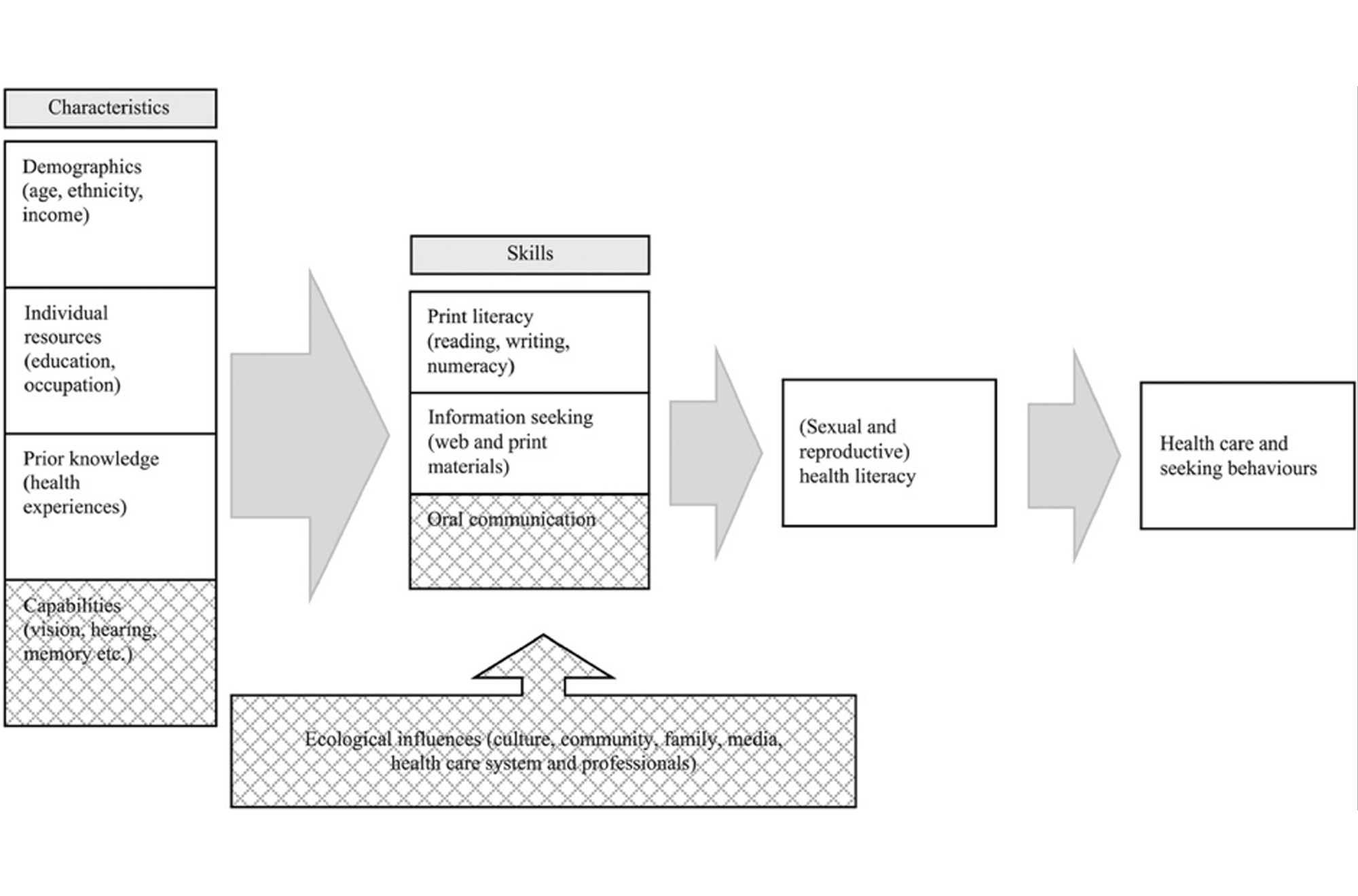
Top image: Patterned fill means these aspects in the study were not measured.
by Heini Väisänen, Ann M Moore, Onikepe Owolabi, Melissa Stillman, Adesegun Fatusi, Akanni Akinyemi
Studies in Family Planning, 27 May 2021 (Open access, early view)
Abstract
Little is known about the link between health literacy and women’s ability to safely and successfully use misoprostol to self-induce an abortion. While abortion is only allowed to save a woman’s life in Nigeria, misoprostol is widely available from drug sellers. We interviewed 394 women in 2018 in Lagos State, Nigeria, who induced abortion using misoprostol obtained from a drug seller to determine their sexual and reproductive health literacy (SRHL) and misoprostol knowledge levels; and how these were associated with ending the pregnancy successfully or seeking care for (perceived) complications. Our results show that women’s misoprostol knowledge (measured both quantitatively and qualitatively) was low, but that almost all women were nevertheless able to use the drug effectively and safely. Higher SRHL was associated with being more likely to end the pregnancy successfully and also seeking post-abortion health care. Our study is the first to examine this association and adds to the scarce literature examining the relationship between health literacy and self-use of misoprostol to induce abortions in restrictive settings.
Conclusions
This study is an important addition to the literature about the use of misoprostol for abortion in restrictive settings as it is the first to investigate the association between SRHL and abortion experiences in such a context. Taken together, our quantitative and qualitative results show that, although respondents had low misoprostol knowledge and for the most part did not know how the drug works, this was not associated with issues in the successful use of misoprostol for pregnancy termination. While SRHL may help women to end the pregnancy successfully and may be correlated with the likelihood of seeking care from a health facility, the absolute differences were small. These results show that even in settings where knowledge about the drug is low, misoprostol can be effectively used for abortion.
Excerpts from the main text
Health literacy is defined as the ability to “gain access to, understand and use information in ways which promote and maintain good health” (World Health Organisation 1998)
Health literacy is of particular importance in contexts where health care information and services may be hard to access because of distance, insufficient medical providers, cost or language barriers, or because the health care an individual is seeking is illegal where they live. In such circumstances, the ability to explore options and make appropriate health-related decisions, with no or limited guidance from qualified health care professionals, is influenced by health literacy, potentially reducing mortality and morbidity, for example, due to unsafe abortion.
Ninety-six percent of women reported they successfully ended the pregnancy, and 6 percent sought post-abortion care from a health facility. On the SRHL question, half of the women (52 percent) correctly knew the most fertile time of the month. Women’s knowledge of misoprostol was relatively low. Almost 22%of women did not answer any of the questions correctly. Around half of the women answered one question correctly, and 29% answered two to three correctly. One woman got all four questions right. The most well-known aspect of misoprostol knowledge was how soon a woman’s period returns after using the drug (65%). The other three questions were answered correctly by 12–20% of respondents. Most women (77%) sought information about misoprostol from one source only, the most common source being the drug seller. The respondents had relatively high literacy and numeracy levels, with over 70% of them being able to read the example sentence correctly and answering at least three out of four numeracy questions right.
Misoprostol knowledge was not associated with being able to terminate the pregnancy successfully or seeking help from a health care facility, whereas high SRHL was associated with a lower percentage of women still pregnant after using the drug and a higher percentage of women seeking care after the abortion. None of the sociodemographic characteristics, numeracy, literacy, or information-seeking behavior were associated with the two outcomes.
In order to better understand women’s motivations to seek care after the abortion, we analyzed an open-ended question “What was the main reason you decided to seek care?” for the 23 women who sought care. We grouped the responses into four categories: potential complications (women reporting excessive bleeding or pain, or fear of dying, n=6); a checkup (women reporting wanting to know “everything was okay,” wanting to make sure the pregnancy had ended, or going for “a general checkup,” n=12); to complete the abortion (women mentioning an evacuation, n=4); and one other.
We found few differences in success rates or care-seeking according to women’s sociodemographic characteristics or previous reproductive experiences.
[Editor’s Note: Women’s descriptions of how the misoprostol worked are numerous and worth looking at. Here are a few examples:
The pain felt more like early labour contraction so I feel it pushed out the foetus the same way the baby is expelled from the womb.
The drug will go directly to the womb and bust the foetus which is still blood.
The drug was too strong for the foetus; [it] interrupted it and pushed it out.



